
Categories:
Gun safety is a fundamental aspect of responsible gun ownership and usage. Whether you are a beginner who has just acquired your first gun or someone who is considering learning to handle guns, understanding and practicing gun safety is paramount. This introductory guide aims to provide beginners with essential knowledge and guidelines to ensure safe handling and storage of guns.
It is important to recognize that guns can be dangerous if mishandled or used improperly. Therefore, acquiring the necessary knowledge and skills is crucial for personal safety as well as the safety of those around you. This guide will cover key aspects of gun safety, including safe handling, storage, transportation, and general precautions.
Firstly, we will delve into the basic rules of gun safety that everyone should follow at all times when handling guns. These rules serve as a foundation for safe gun usage and must be ingrained in every novice shooter’s mind. Additionally, we will explore the different types of guns commonly encountered by beginners and discuss their unique features.
Moreover, this guide will emphasize the significance of proper storage methods to prevent unauthorized access or accidents involving guns. We will delve into various options available for safely storing guns both at home and while traveling.
By following these guidelines diligently, beginners can develop a strong foundation in gun safety practices that will foster responsible gun ownership habits. Remember that education and continuous practice are essential in maintaining a safe environment when handling guns.
Before embarking on your journey to becoming a responsible gun owner, it is crucial to understand the basics of guns. Educating yourself about these fundamental aspects will not only ensure your safety but also promote responsible gun ownership in your community. First and foremost, it is essential to acquaint yourself with the different types of guns available. Broadly speaking, there are handguns and long guns.
Handguns include pistols and revolvers, while long guns encompass shotguns and rifles. Each type has its specific characteristics and uses, so understanding their differences is vital. A key element in gun safety is comprehending how a gun functions. Familiarize yourself with the basic components such as the barrel, action, magazine or cylinder, trigger mechanism, sights, and grip. Understanding how these parts interact will help you handle a gun safely.
Furthermore, learning about various types of ammunition is crucial for safe gun usage. Ammunition consists of a casing that holds a primer, propellant powder charge, and bullet or shot pellets. Different calibers or gauges exist for different guns; thus understanding which ammunition corresponds to your specific gun is vital for safe operation. Lastly, acquiring knowledge about safe handling practices is paramount when it comes to gun safety.
Always treat every gun as if it were loaded, regardless of its actual condition—a principle known as “muzzle awareness.” Additionally, mastering proper grip techniques and learning how to engage safeties effectively are essential skills every beginner should cultivate.
When it comes to gun safety for beginners, selecting the right gun is crucial. With a wide range of options available, it’s important to choose a gun that suits your specific needs and abilities. Here are some key considerations to keep in mind before making a purchase:
1. Purpose: Determine the intended use of your gun. Are you planning to use it for self-defense, target shooting, or hunting? Each purpose requires different features and calibers. 2. Size and Weight: Consider the size and weight of the gun you are comfortable handling. Smaller guns are easier to conceal but may have more recoil, while larger ones offer better stability but can be bulkier.
3. Caliber: Research different caliber options and understand their characteristics. Smaller calibers like .22LR have less recoil, making them suitable for beginners, whereas larger calibers such as .45 ACP provide greater stopping power. 4. Action Type: Familiarize yourself with various action types like single-action, double-action, or semi-automatics. Each has its advantages and disadvantages in terms of ease of use, reliability, and maintenance requirements.
5. Ergonomics: Pay attention to how the gun feels in your hand. Ensure that the grip fits comfortably and that you can easily reach all controls without straining. 6. Safety Features: Look for guns with built-in safety mechanisms such as thumb safeties or trigger safeties that prevent accidental discharges.
When it comes to guns, safety should always be the top priority. Whether you are new to guns or have limited experience, understanding and adhering to essential safety rules is crucial. By following these guidelines, you can minimize the risk of accidents and ensure a safe environment for yourself and those around you. 1. Treat every gun as if it were loaded: Always assume that a gun is loaded until you have personally verified it yourself.
Never point a gun at anything you do not intend to shoot. 2. Keep your finger off the trigger: Until you are ready to fire, your finger should remain outside of the trigger guard and alongside the frame of the gun. This helps prevent accidental discharges. 3. Be aware of your target and what lies beyond: Before pulling the trigger, always identify your target and consider what may be behind or beyond it.
Bullets can travel through multiple barriers with potentially harmful consequences. 4. Store guns securely: When not in use, guns should be stored unloaded in a locked container or with a locking device such as a cable lock or trigger lock. Ammunition must be kept separate from guns. 5. Educate yourself on proper handling: Seek out qualified instruction from experienced individuals or reputable training courses to learn how to handle guns safely and responsibly.
6. Never mix alcohol or drugs with shooting activities: The consumption of alcohol or drugs impairs judgment, coordination, and reaction times—rendering them incompatible with safe gun handling.
Ensuring the safe storage and security of guns is a fundamental aspect of responsible gun ownership. Whether you are a beginner or an experienced gun enthusiast, it is essential to adopt appropriate measures to prevent unauthorized access and accidents. Implementing these practices not only safeguards those around you but also helps protect your valuable investment.
Firstly, storing guns in a secure location is crucial. Consider investing in a sturdy gun safe that meets industry standards. A well-built safe provides protection against theft, fire, and unauthorized access. Ensure the safe is properly anchored to prevent it from being easily moved or stolen.
Additionally, ammunition should be stored separately from guns in locked containers or safes designed specifically for this purpose. This practice prevents accidental discharge and ensures that only authorized individuals have access to both guns and ammunition.
Moreover, restricting access to guns by utilizing locking devices such as trigger locks or cable locks further enhances safety. These devices effectively immobilize the gun, preventing mishandling by unauthorized individuals such as children or burglars.
It is essential to educate all household members about proper gun handling and storage procedures. Promote an open dialogue about gun safety, emphasizing the importance of never handling guns without supervision.
Lastly, if you need to transport your gun outside your home—for hunting or recreation purposes—ensure it is unloaded and securely locked in a case specifically designed for transportation.
By implementing these proper storage and security measures consistently, beginners can establish a solid foundation for responsible gun ownership while prioritizing safety within their homes and communities.
When it comes to guns, safety should always be your top priority. Whether you are a beginner or an experienced shooter, understanding how to handle and load a gun safely is crucial. Here are some essential guidelines to follow:
1. Treat every gun as if it is loaded: Always assume that a gun is loaded until you have personally verified that it is not. Never point a gun at anything you do not intend to shoot, and keep your finger off the trigger until you are ready to fire. 2. Familiarize yourself with the specific gun: Each gun operates differently, so take the time to read the owner’s manual thoroughly before handling any new gun.
Pay attention to safety features, such as safeties or decocking mechanisms. 3. Keep the muzzle pointed in a safe direction: Whether you are handling or loading a gun, ensure that its muzzle is always pointed in a safe direction away from people or valuable objects. 4. Store ammunition separately: Before handling any gun, make sure there is no ammunition in the immediate vicinity.
Store ammunition in a different location than where you handle guns. 5. Follow proper loading procedures: When loading a gun, ensure that you are using the correct ammunition for that particular gun model. Always insert magazines or cartridges carefully and avoid placing your finger on the trigger during this process. 6. Seek professional training: If you’re new to guns or want to enhance your skills further, consider seeking professional training from certified instructors who can teach you proper handling techniques and reinforce safe habits.
When it comes to gun safety for beginners, learning and practicing proper shooting techniques is of utmost importance. These techniques not only enhance accuracy but also promote safe handling and control of guns. Here are some fundamental shooting techniques that every novice shooter should master:
1. Stance: Adopting a stable stance is crucial for maintaining balance and control while shooting. Stand with your feet shoulder-width apart, knees slightly bent, and weight evenly distributed on both feet. This balanced stance provides a solid foundation for accurate shots. 2. Grip: Establishing a firm grip on the gun is essential to maintain control and reduce recoil. Hold the gun with both hands, ensuring that your dominant hand wraps around the grip while the non-dominant hand supports from underneath or alongside the trigger guard.
3. Sight Alignment: Accurate shooting requires proper sight alignment. Align the front sight post with the rear sight aperture while focusing on the target beyond them. Ensure that all three elements are in perfect alignment before squeezing the trigger. 4. Trigger Control: Developing good trigger control enables precise shots without disturbing sight alignment. Place your index finger smoothly on the trigger pad, applying steady backward pressure until you achieve a surprise break without jerking or anticipating recoil.
5. Breathing Control: Controlling your breathing is crucial to minimize movement during aiming and firing. Take a deep breath, exhale halfway, hold it momentarily as you align your sights, then gently squeeze the trigger during natural respiratory pauses. Remember, mastering these basic shooting techniques takes time and practice.
When it comes to gun safety, avoiding common mistakes is crucial for beginners. Mishandling guns can lead to devastating consequences, making it essential to prioritize safety at all times. By being aware of the following common errors and learning how to avoid them, beginners can ensure a safe and responsible gun ownership experience. 1. Lack of proper education: One of the most significant mistakes beginners make is not seeking proper education and training before handling guns.
It is essential to enroll in reputable gun safety courses or seek guidance from experienced individuals who can teach you the fundamental rules. 2. Negligent trigger discipline: Failing to practice trigger discipline is another common mistake that can lead to accidental discharges. Always keep your finger off the trigger until you are ready to shoot, ensuring the gun is pointed in a safe direction.
3. Inadequate storage: Storing guns improperly poses a serious risk, especially if there are children or unauthorized individuals around. Invest in secure storage options such as lockboxes or safes that restrict access and prevent accidental use. 4. Poor muzzle awareness: Beginners often overlook muzzle awareness, which involves keeping the gun’s barrel pointed in a safe direction at all times. Being mindful of where your muzzle is pointing helps prevent unintentional injuries or damage caused by an accidental discharge.
5. Lack of eye and ear protection: Neglecting personal protective equipment like eye and ear protection when shooting can result in severe injuries or permanent hearing loss due to loud noises or ejected debris.
When it comes to gun safety, there is no substitute for proper training and continued education. While it is crucial to familiarize yourself with the basic safety rules, seeking professional instruction can provide you with comprehensive knowledge and practical skills that will greatly enhance your understanding of gun safety. Professional training offers beginners the opportunity to learn from experienced instructors who have extensive knowledge about guns and their safe handling.
These experts can guide you through all aspects of gun safety, including proper storage, handling techniques, shooting fundamentals, and range etiquette. They can also teach you how to identify different types of guns, understand their mechanisms, and explain the laws surrounding gun ownership. In addition to acquiring fundamental knowledge, professional training provides valuable hands-on experience in a controlled environment. Through supervised live-fire exercises at shooting ranges or simulators, beginners can practice safe handling techniques under the watchful eye of an instructor.
This practical approach helps build confidence while reinforcing safe habits that are essential for responsible gun ownership. Furthermore, seeking continued education in gun safety is equally important even after completing initial training. Laws pertaining to guns can change over time or vary between jurisdictions. It’s crucial to stay informed about any legal updates or changes in regulations that may affect your gun ownership rights or responsibilities.
Whether you are a beginner or an experienced shooter looking to improve your skills further, investing in professional training and ongoing education will ensure that you have a solid foundation in gun safety practices while keeping up-to-date with relevant laws and best practices within the guns community.
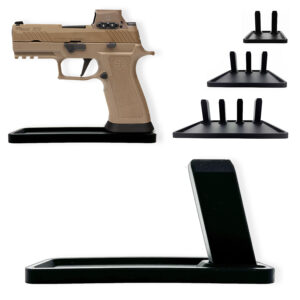

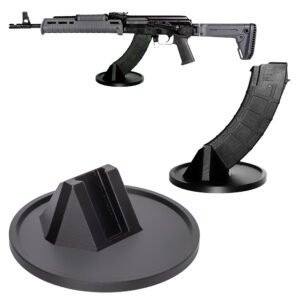

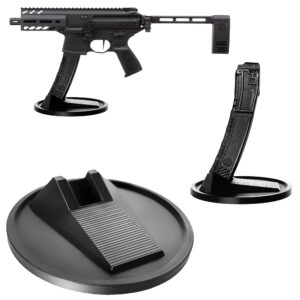
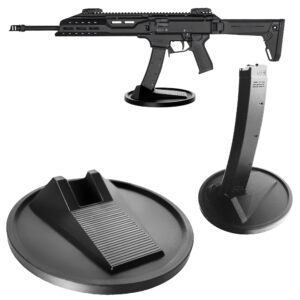

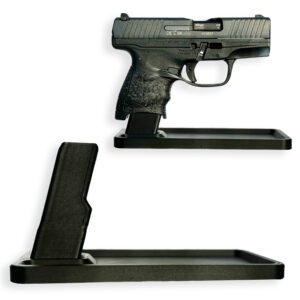
Colt
Colt M4 Carbine
Colt LE6920
Colt AR-15 A4
Daniel Defense
DDM4 V7
DDM4 V9
DDM4 V11
DDM4 ISR (Integrally Suppressed Rifle)
Smith & Wesson (S&W)
M&P15 Sport II
M&P15 Tactical
M&P15T
Bravo Company Manufacturing (BCM)
BCM Recce-16
BCM Recce-14
BCM MCMR Series
Aero Precision
M4E1 Series
AC-15
AR15 Pistol (Various Configurations)
Ruger
Ruger AR-556
Ruger SR-556
Ruger AR-556 MPR (Multi-Purpose Rifle)
Springfield Armory
Saint Victor
Saint Edge
Saint AR-15
PSA (Palmetto State Armory)
PSA PA-15
PSA AR-V
PSA Jakl (AR Pistol)
FN America
FN 15 Tactical Carbine
FN 15 Patrol
FN 15 DMR
Wilson Combat
Recon Tactical
Super Sniper
Protector Carbine
SIG Sauer
SIG M400 Tread
SIG M400 Elite
SIG M400 SDI
LWRC International
IC DI (Direct Impingement)
IC SPR
IC A5
Bushmaster Guns
XM-15 QRC
Bushmaster MOE
XM-15 Patrolman
Rock River Arms
LAR-15 Entry Tactical
LAR-15 Predator
LAR-15 Elite Comp
Stag Arms
Stag 15 Tactical
Stag 15L (Left-Handed Models)
Stag 15 Valkyrie
Noveske Rifleworks
Noveske Gen 4 N4
Noveske Space Invader (AR Pistol)
Noveske Recon
Anderson Manufacturing
AM-15 Optic Ready
AM-15 M4 Carbine
AM-15 Precision Rifle
Adams Arms
AA-15 Piston Rifle
P2 AARS (Adams Arms Rifle Series)
Black Rain Ordnance
SPEC15 Series
BRO Predator
Fallout 15
Diamondback Guns
DB15 Series
DB15CCMLB
DB15EB
Del-Ton Inc.
DTI-15
Del-Ton Echo 316H
Sierra 316M
Windham Weaponry
Windham SRC
Windham VEX-SS
Windham RMCS-4 (Caliber Conversion System)
Christensen Arms
CA-15 G2
CA-15 Recon
CA-15 Titanium Edition
Patriot Ordnance Factory (POF-USA)
Renegade Plus
P415 Edge
Revolution DI
LaRue Tactical
PredatAR
OBR (Optimized Battle Rifle)
LaRue Stealth 2.0
Battle Arms Development
Workhorse Patrol Carbine
BAD556-LW (Lightweight)
Authority Elite Rifle
Faxon Guns
Ascent AR-15
FX-19 (AR Pistol)
Streamline Ultralight Series
KE Arms
KE-15 SLT (Super Lightweight Tactical)
KE-15 Scout Carbine
Primary Weapons Systems (PWS)
MK1 MOD 2-M
MK116 PRO
MK107 (Piston AR Pistol)
ZEV Technologies
ZEV Core Elite Rifle
ZEV AR15 Billet Rifles
Franklin Armory
BFSIII AR-C1
Militia Model
F17-L (Chambered in .17 WSM)
Seekins Precision
SP15 DMR
NX15 Skeletonized Rifle
Havak Bravo
Aero Precision (Additional Models)
EPC-9 (Pistol Caliber ARs)
VG6 AR Rifles
Barrett Guns
REC7 DI
REC7 Gen II
CMMG
MK4 RCE
Resolute 300
Banshee (AR Pistol)
DPMS Panther Arms
Panther Oracle
Panther LR-308
H&K (Heckler & Koch)
HK MR556A1
HK416 (Military Variant)
Rock Island Armory (Armscor)
VR-80 Tactical AR (Shotgun AR Platform)
Troy Industries
Troy SPC-A3
Troy PAR (Pump Action AR)
Wilson Tactical
Tactical Recon AR
Protector Series
F1 Guns
FDR-15 Skeletonized Rifle
BDRx-15 Series
Juggernaut Tactical
JT-15
JT-10 Precision Rifle
AeroSurplus
Surplus AR-15 Rifles (Budget Models)
Thunder Tactical
AR-15 Basic Carbine
Tactical Builder Sets
Radical Guns
RF-15
Forged AR-Series
Dark Storm Industries
DS-15 Featureless Rifles
DS-10 Typhoon
DRD Tactical
Paratus
Aptus AR Rifles
Bear Creek Arsenal
BCA-15
AR Complete Upper Builds
Aero Survival Rifles (ASI)
ASR Tactical Series
Tactical Edge
WARFIGHTER Series
AR-15 Lightweight Rifles
Lone Star Armory
TX15 DMR
TX15 Carbine
HERA Arms
HERA H7
HERA AR-15 Lower Builds
IWI (Israeli Weapon Industries)
Zion-15
DRD Tactical
Tactical Modular Rifles
Quick-Takedown Rifles
V Seven Weapons
1776 Rifle
Hyperlite Rifle
Core Rifle Systems
Core15 Tac III
Core15 Patrol Rifle
Armalite (Original AR-15 Creator)
M15 Tactical
M15 A4 Carbine
DEF15 (Defensive Sporting Rifle Series)
PSA (Palmetto State Armory Additional Models)
PSAK-47 Hybrid (AR-AK Style Hybrid)
PSA Dagger (Pistol Caliber Configurations)
Odin Works
OTR-15
Odin Recon Rifle
Maxim Defense
MDX-508 PDX (Compact AR Pistol)
MDX-510 Rifle